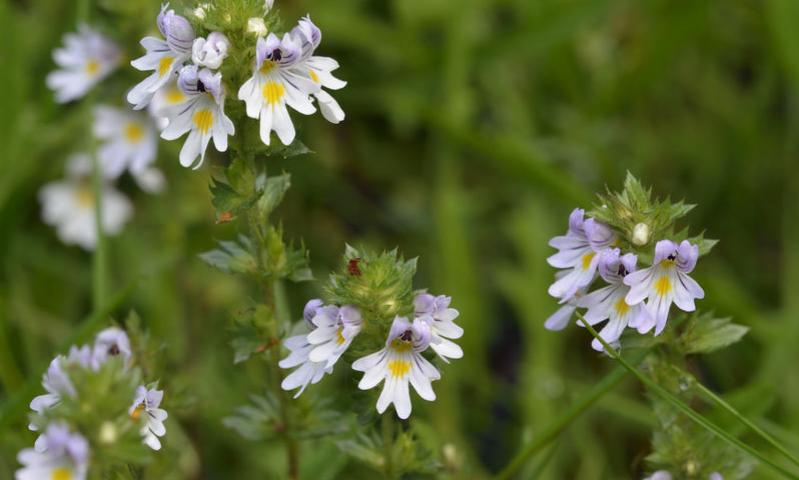 />
/>
COMMON NAME: Eyebright
LATIN NAME: Euphrasia Officinalis
ORIGIN: Europe
HABITAT: Europe, North America, Northern Asia, Western Asia. Eyebright grows on wastelands, meadows, on the slopes and on the roadsides. It is found everywhere in Europe.
BOTANICAL INFORMATION:
Eyebright (lat. Euphrasia officinalis) belongs to the genus Euphrasia of the Orobanchaceae family. The genus includes 241 species. For a long time, many European species were united under one name - Euphrasia officinalis, until in 1896 the Austrian botanist R. Wettstein did not crush the genus Euphrasia into numerous separate species, the status of which continues to be refined by researchers up to date.
Eyebright is an annual semi-parasitic herb that reaches 10-15 cm, and under favorable conditions, it is 30 cm in height. The plant has a taproot capable of going deep into the soil. Haustoria often develop on the roots, with the help of which the herb attaches to the donor plant and nourishes. If Eyebright grows among the grasses or other useful plants, it can grow at the expense of them, but it will gradually dry out the “donors”. In addition, this herb is able to grow without the help of haustoria, although it develops much more slowly. The stem is straight, sometimes strongly branched, and reddish-brown in color. Eyebright leaves are small, ovate, toothed. At the bottom of the stem, they quickly fall off. The flowers of the plant are also small, 6–10 mm in size, white or pale-violet, with a yellow rounded spot in the middle. Flowering continues until mid-October. After pollination seed boxes with many oblong small seeds ripen on Eyebright.
CHEMICAL COMPOSITION: Euphrasia Officinalis is a real storehouse of such micro- and macroelements as silicon and magnesium, zinc and boron, iron, chromium, manganese, magnesium, iodine, copper, selenium, phosphorus etc. Eyebright contains aukubin and other iridoid glycosides. In addition, lignans, flavonoids, tannins of the pyrocatechin group, bitterness, essential oil, fatty oil, resins, gallotanins, aromatic acids are found in its composition. The high biological activity of the plant is also explained by the presence of coumarins, glycosides (which have a beneficial effect on the work of the heart), anthocyanins, as well as vitamins A, C, E, D and B vitamins.
HISTORY:
Ancient people sometimes called Eyebright Toad grass.
*This article is for informational purposes only. We suggest consulting a physician before using these or any other herbal supplements.
